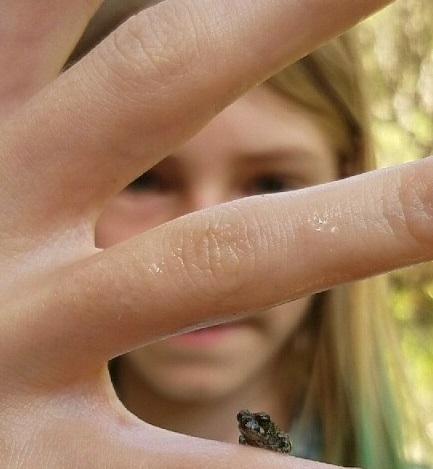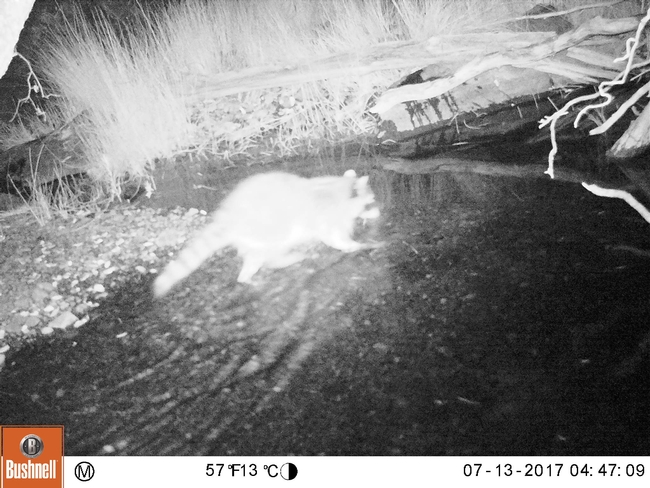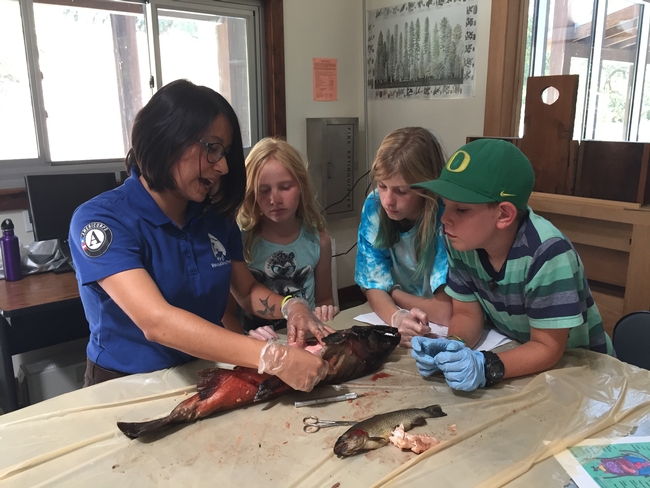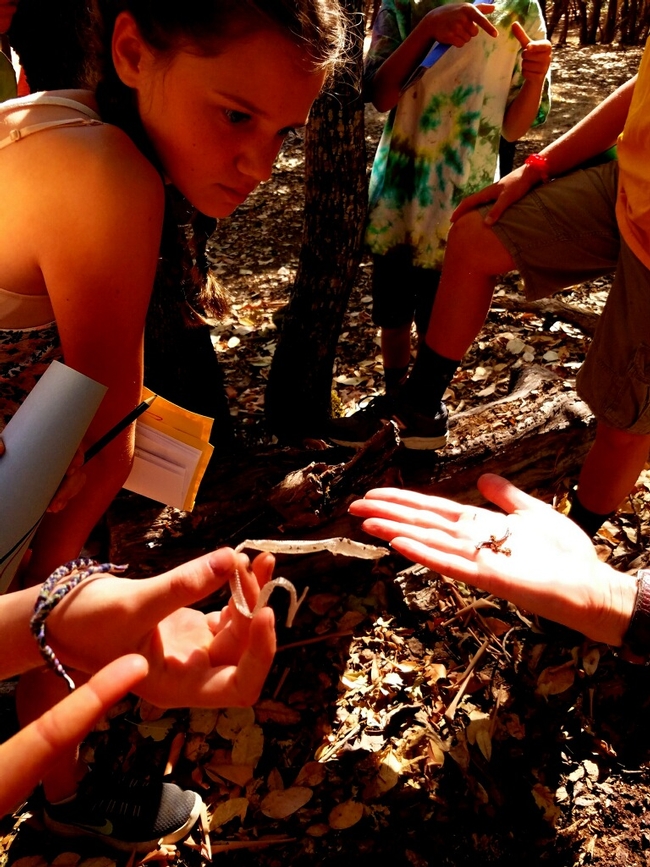Posts Tagged: wildlife
Winds of Change: Bridging Art and Science
Mark your calendars. A professor renowned for bridging art and science will address a UC Davis Wildlife, Fish and Conservation Biology seminar on...
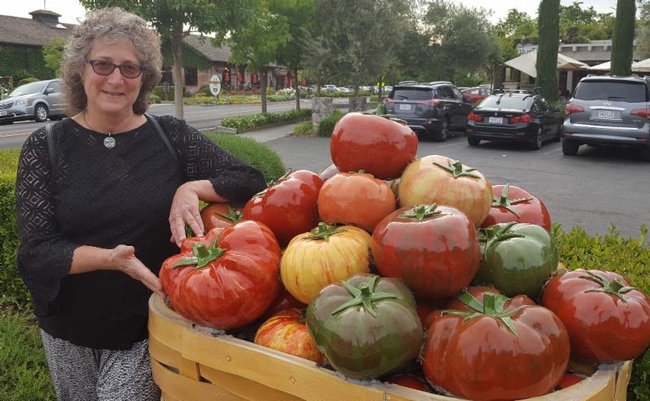
Entomologist/artist Diane Ullman with her tomato sculpture.
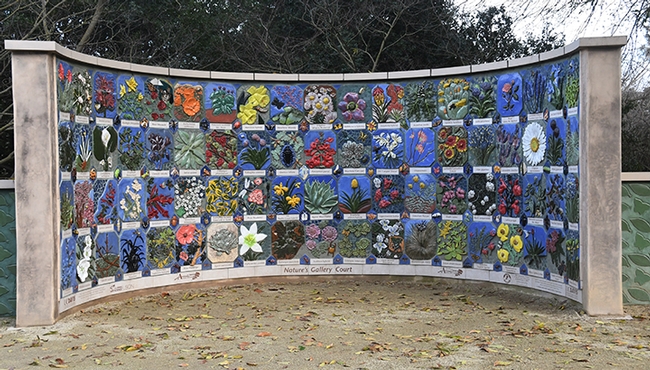
This is Nature's Gallery, a UC Davis Art/Science Fusion Program project installed in 2012 in the Ruth Storer Gardens, UC Davis Arboretum, off Garrod Drive. (Photo by Kathy Keatley Garvey)
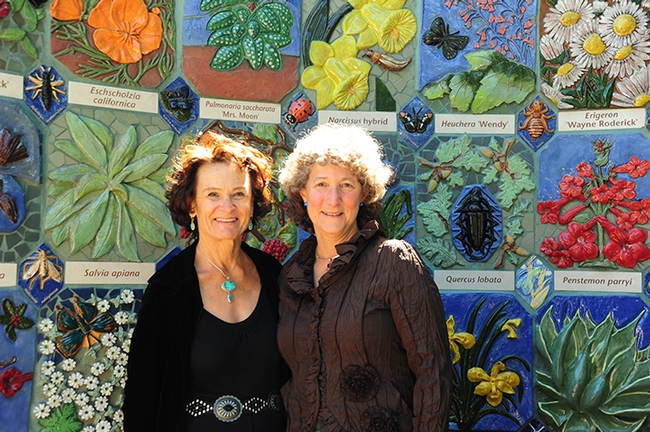
Co-founders and co-directors of the UC Davis Art/Science Fusion Program are noted ceramic mosaic artist Donna Billick (left) and UC Davis entomologist/artist Diane Ullman. They are standing in front of Nature's Gallery, UC Davis Arboretum. (Photo by Kathy Keatley Garvey)
Coming Oct. 7: A Tour of Kate Frey's Bee-utiful Garden
"When's the next public tour of Kate Frey's garden?" That's a question we're often asked and now we have an answer: Saturday, Oct. 7. World-class...
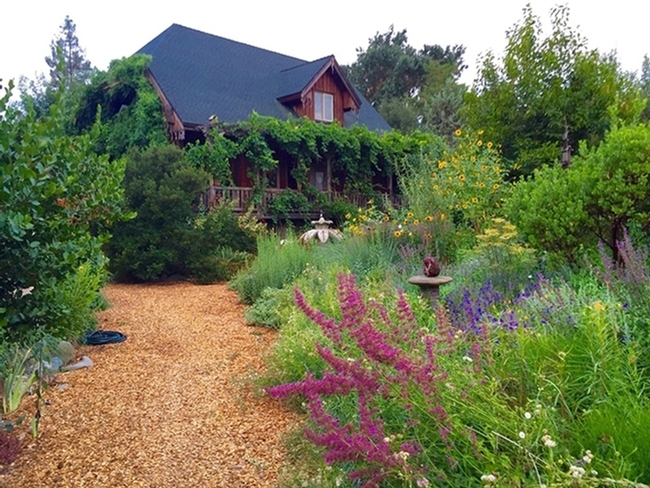
This is the Hopland home of Kate and Ben Frey, featuring gardens by Kate and rustic structures and whimsical art by Ben. (Photo by Kate Frey)
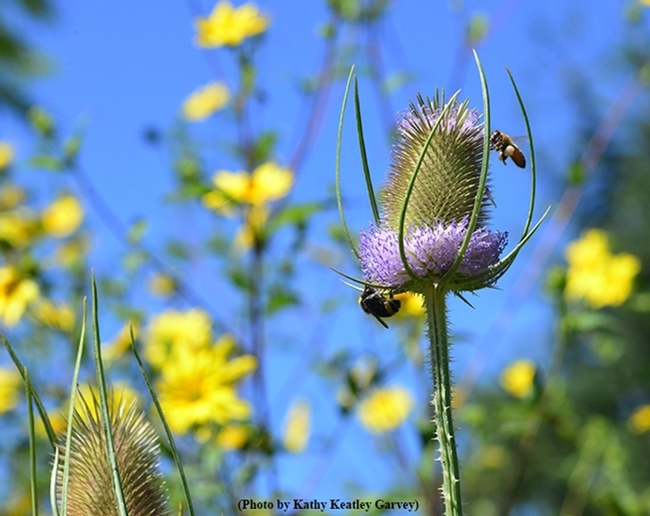
A bumble bee and honey bee share teasel in the Frey gardens. (Photo by Kathy Keatley Garvey)
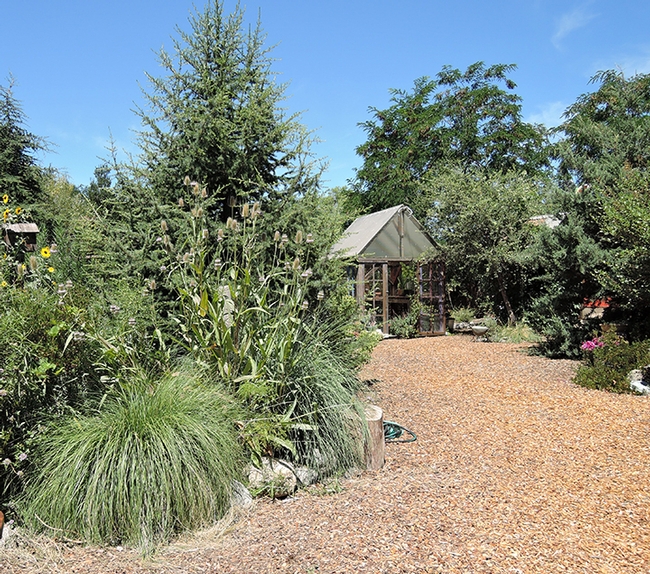
An inviting path in the Frey gardens. (Photo by Kathy Keatley Garvey)
Caging kids! The next generation of wildlife biologists
As 10-year-old Dominic Vargas crouched on the ground, in a cage not much larger than himself, trying to forage for tasty treats (candy) on the woodland floor...CRASH! The cage door came falling down and he realized that he had inadvertently tripped a tiny fishing line in his efforts to reach that candy - he was now trapped. Dominic seemed to accept his fate with good humor, shrugging, smiling and getting to work on that candy. Wildlife biologist, Jessie Roughgarden, commented that Dominic will now be collared, tagged and measured before returning him to the wild ... or in this case his parents.
This seemingly terrifying experience is in fact all part of the new "Sustainable You - 4-H Summer Camp" held at the UC Hopland Research and Extension Center. Sustainable You is a five-day camp allowing students to experience science and nature while learning about ways in which to conserve the land, water, air and energy.
View Dominic's experience in this 44-second video:
The camp is conducted at three of the UC Agriculture and Natural Resources' Research and Extension Centers across the state and each center tweaks the curriculum to suit their landscape and the kinds of research conducted at their sites. At Hopland this means getting the chance to meet with wildlife biologists from the UC Berkeley "Brashares Lab," led by professor Justin Brashares. It's an amazing opportunity for these kids to meet and ask questions of scientists conducting experiments in the countryside that surrounds them. Dominic may not be collared, but more than 10 deer on the property went through the same experience last week (minus the candy) as they were carefully captured by researchers and fitted with collars to better understand their movements and population across the 5,358-acre center.
The young team of scientists enjoying summer camp were also working to understand what wildlife shares the landscape with them by setting wildlife cameras daily and improving their positioning and locations each day. Advice from Brashares and Jessie Roughgarden helped the students improve their chance of catching footage of raccoons, foxes and maybe even a mountain lion. Day one produced fox video footage and shots of raccoons feeling around in the last pools of creek water to catch some of the tiny young frogs currently in residence.
Hear what Ahmae saw on her wildlife camera in the 59-second video below:
Exposure for these kids not only to hands-on activities exploring sustainability, but also to wildlife biologists, young researchers and professors working on today's wildlife and land management challenges, gives them an open door to explore their own future careers and interests.
As 9-year-old Ahmae Munday so sweetly put it, when asked what her favorite part of the Sustainable You Summer Camp was, "Everything! Especially the cameras."
The UC ANR network of Research and Extension Centers provide the perfect location to offer exposure to youth and communities to better understand and interact with the science going on in their own back yards and to inspire the next generation of researchers - as camp attendee and scholarship recipient Kaiden Stalnaker described in his scholarship application, "When I grow up I dream of a career in science and your camp would be a boost in the right direction."
Thanks to the researchers, camp counselors and students who have allowed the Sustainable You summer camp to inspire young people like Kaiden.
Look Out, Franklin's Bumble Bee, They're Coming for You!
Look out, Franklin's bumble bee, they're coming for you! The question is: Where are you? Have you managed to "hide" all these years or are you...
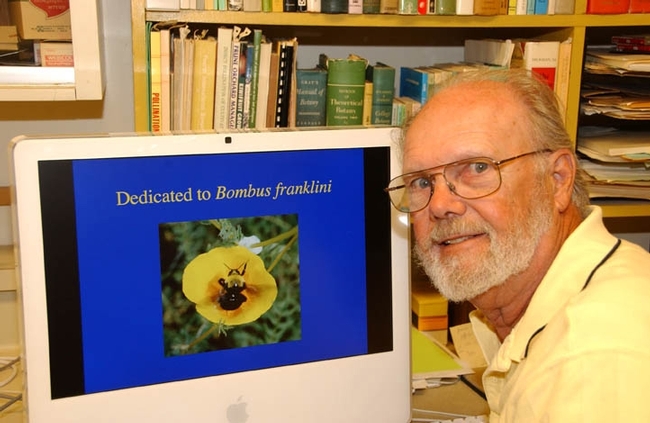
Bumble bee expert Robbin Thorp of UC Davis with his computer screen showing a photo he took of Franklin's bumble bee, now feared extinct. He last saw it on Aug. 9, 2006 in a meadow near Mt. Ashland. (Photo by Kathy Keatley Garvey)
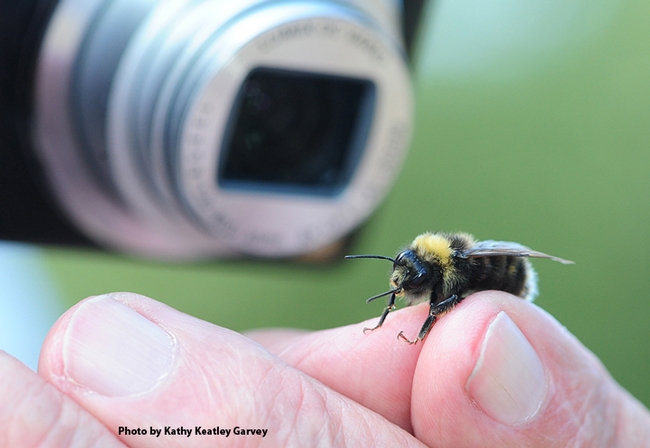
This is the Western bumble bee, Bombus occidentalis, found Aug. 15, 2012 by Mt. Shasta. It is on the endangered list. (Photo by Kathy Keatley Garvey)
State's Proposed Permit Rules for Insect-Collecting: Onerous, Obtrusive, Obstructive
When UC Regents scholar Heather Wilson, a junior specialist in the Frank Zalom lab, UC Davis Department of Entomology and Nematology, entered the...
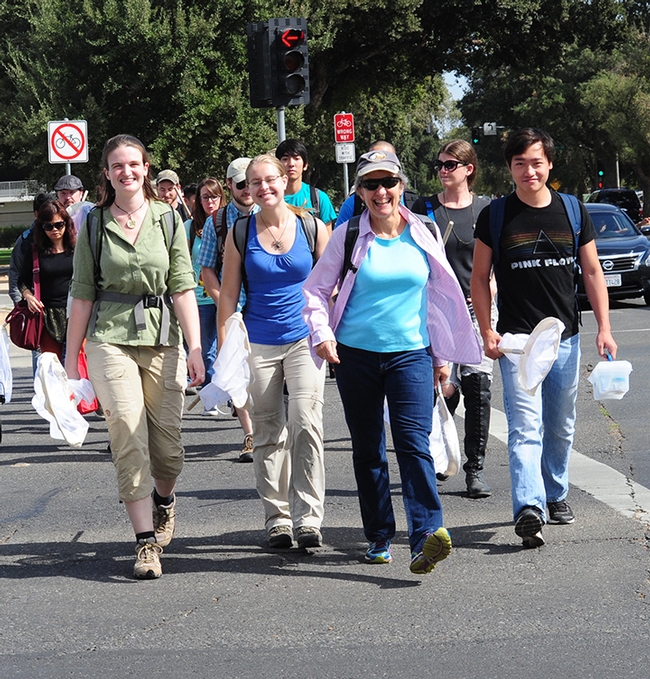
Lynn Kimsey (third from left), director of the Bohart Museum of Entomology and professor of entomology at UC Davis, leading a field trip to collect insects on the Student Farm. (Photo by Kathy Keatley Garvey)


